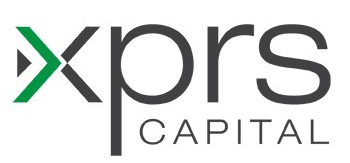Seasonal Cash Flow FINANCING
While few small businesses have a consistent cash flow profile throughout the entire year, some are much more impacted by seasonal effects than others. Clothing retailers, for example, tend to have peak sales during the summer but are not as hard hit during slower months as, say, landscaping companies during the winter. Regardless of the nature of events—weather, holidays, sporting events, school calendar, or other—many businesses generate a significant portion of their cash flow in one, or possibly two peak seasons. In such cases, short term business loans could help smooth business cash flow.
In fact, “seasonal” factors could be month-to-month: January is favorable for the travel industry, vacation homes, and health club memberships; February has Valentine’s Day; March combines college sporting events with some of highest church attendances; April is the best month to market outdoor-related and household cleaning products; May features Mother’s Day; June is the busiest month for graduations and weddings; July features Independence Day; August is one of the best months for summer-related products and is often the highest travel period; September hails back-to-school sales; setting aside Halloween, October sees a jump in TV viewership given multiple sporting events including the NFL and World Series; November marks the beginning of the holiday sales season; and December is the peak holiday season with the convergence of multiple holidays.
As a business owner, the key to navigating the predicable—and sometimes unpredictable—seasonal patterns is to carefully analyze your fixed and variable expenses and their impact on your cash flow. Fixed costs (or overhead) can be your rent expense and wages to full-time employees. Variable costs can include material costs, inventory purchases, marketing expense, commissions, and wages to part-time employees. Typically, a highly seasonal business will have a period of low cash flow dominated by overhead expenses during the off-season, potentially large negative cash flow in anticipation of the peak season, and positive cash flow during peak season.
If you own a business with such fluctuations, you might be struggling to manage cash flow efficiently, especially if you are a growing business. Whether to hire additional salespeople ahead of holiday sales, or to purchase inventory for the peak season, you need access to capital and a short term business loan could be right for you.
Some business owners may have the option to ask customers for upfront-/down-payments, ask vendors for flexible payments terms, or sometimes even bill clients in advance by offering discounts. Other businesses may use merchant cash advances. However, these options can be quite expensive: merchant cash advances typically have factor rates of 1.3x, meaning you could be paying 30% in cash advance fees within a 3 month period (for more details, please see our “Working Capital Financing” discussion here). Some merchant cash advance companies even require a Lock Box or Trust Bank Account Withholding where all of your credit card sales are first deposited into a bank account controlled by the financing company, after which the company returns funds to you at the agreed upon split.
Instead, our XPRS Seasonal Cash Flow Financings are unsecured business funding structured to be flexible to fit your needs. Our fixed payment, short term business financing can be ideal for businesses that require capital now but expect to pay down the balance within 6 to 12 months. Our application process is simple and fast, and we offer competitive rates.
If you are ready to move forward and join the many businesses that have grown with us, click here.
